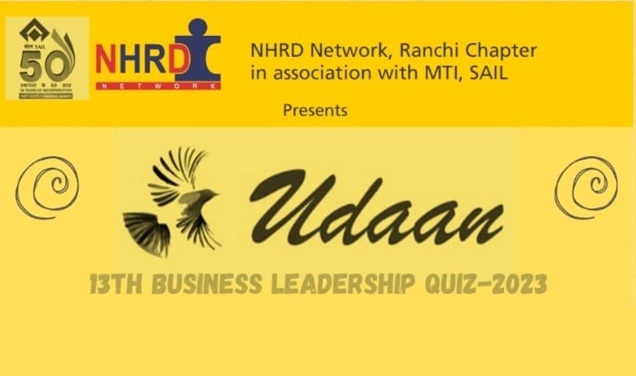While the world has gone back to its pre-2020 mannerisms, quizzing is still stuck in this weird dualism that divides its lovers. For organizers of quizzing events, online quizzing provides access to participants from across the country coupled with minuscule organizational costs. Once you’ve reached out to participants, just set up a Zoom link and you’re ready to go. Additionally, it provides an almost television standard hour-long show that can go on YouTube as an owned property and live online in perpetuity. On the other side of the aisle are participants who don’t have the hassle (and costs) of travelling to the venue especially when one lacks confidence in competing with the country’s finest.
On the other hand, offline quizzing provides an unparalleled social experience where you work as a team with your partner(s), the memory of the event lingers for long due to the physical nature and grandeur of the event, and most importantly the competition feels fairer. The operative word there is “feels”. Whether the win in an online quiz was by fair means or not, there tends to be a competitor or a casual viewer on YouTube who will claim the winner used unfair means, leaving a sour aftertaste in the minds of all stakeholders.
Now, why am I starting the review of Udaan with this online quizzing vs offline quizzing debate? Well in 13 years of Udaan, there have been 9 offline and 4 online editions. And, this year, there was a lot of demand from those who care about Udaan to make it offline again. However, after much deliberation, it was decided to continue with Udaan as an online quiz.
As the quizmaster, my responsibility then is to ensure that I introduce an interesting format and create questions which make it difficult for anyone to cheat. This while maintaining a balance between the interestingness of a question, removal of any ambiguity (as it lacks proper nouns and exact timeline), and showmanship flair since it is being live-streamed/going online (frankly, no viewer wants to listen to “you are muted, please unmute yourself” for one hour).
So, watch the videos below to see what we came up with.
East Zone
The two eventual winners Rabi Sankar Saha and Sampad Mishra fought hard from the beginning to the end, until Rabi ran out of steam and Sampad banked on his years of experience to pull away from Rabi. Over the years, both of them have given us a wonderful game of cat and mouse in the east zone. In 2020 and 2021, it was Rabi who prevailed. In 2022 and 2023, it was Sampad.
West Zone
You know the meme “how it started vs how it ended”, the west zone final was that meme. It began as a 3-way fight between former winners Shantanu Sharma and Rajarshi Chanda, and last year’s qualifier Aiman Ali. Then in the middle section, Vikas Piprani joined the party. The four of them huffed and puffed as the quiz chugged along. Interestingly though, Rajarshi played uncharacteristically well right from the start and so it meant it was a debutant-par-excellence Ashish Agarwal who did to Rajarshi what Rajarshi had been doing to others in the two previous years, a sprint at the end giving west zone its now-familiar dramatic ending.
North Zone
Continuing the form he exhibited in the north zone final and the national final last year, Rohan Khanna accumulated more than enough points after the first round itself. He could have just sat through the rest of the quiz with popcorn and would have still qualified. In a strong group with 3 former national finalists including two previous national runner-ups, Rohan’s eyes were set on the championship title. Perhaps, he wanted to ensure his reputation preceded his presence. Seemingly getting a chance to respond at the mercy of Rohan was Ayush Awasthi, a two-time national runner-up himself, who seemingly was happy he could collect a few scraps that Rohan left behind.
South Zone
If the west zone final was a great day for both quizzing and math, the south zone final was a great day for quizzing but a tough day for math. But before I get to talk about it, taking a leaf out of Rohan’s book was Jayakanthan who deflated the opposition by starting even better than how Rohan did in the north zone final. And so in action was former multiple-time champion Jayakanthan’s familiar consistency on display. But the drama was in second place where last year’s national finalist Cherian Varghese in the 80-20 of quizzing did the 80 right, ie, got the answers right but did the 20 wrong, ie, did the math (dare I say) horribly wrong. And that meant Rahul Jayanti joined Ashish Agarwal as our second debutant in the national final.
National Final
The National Final began with two defending champions running riot early on. Jayakanthan defending the title for South Zone who unearthed 3 different champions 3 years in a row. And Sampad Mishra closely traced him whilst holding the fort for the east zone. The two of them fought and fought hard, as did the others but in the end, the title changed both hands and zones. He was a champion from 2014 to 2017 and since then was a marathon wait that ended with a perfect marathon-like finish. He ran second throughout and saved his legs for a sprint to the finishing tape. With a late late rise, Sampad Mishra’s second coming brought the title back to the east zone after six long years. And Jayakanthan’s early momentum couldn’t translate into a final flourish so his Udaan National Final record now stands at an envious 3 titles and 2 runner-ups, bettered only by Sampad Mishra’s 5 titles and 2 runner-ups.
May Udaan and its battles, both mini and mega, grow from strength to strength 💪

